Lecce: the “Florence of the South”
An irresistible combination of history and magic, palaces and churches, monasteries and convents will welcome you in Lecce also called the “Florence of the South“. The origins of the city date back to the age of the Messapians, but it developed in the Roman age. Famous for the baroque style as well as the gastronomic specialties that characterize it, it is a place loved by tourists who visit Puglia. In addition to its beauty, Lecce can count on its proximity to other very famous places in Salento. In fact, renowned beaches of inestimable beauty are found here where the protagonists are expanses of white sand, wild cliffs and crystal clear waters.

Historic center of Lecce
Accessing the historic center of Lecce is an experience that leaves you speechless: just cross one of the three “gates” that lead to the heart of the city and specifically Porta Napoli, Porta San Biagio or Porta Rudiae.
Walking in the historic center you will have the impression of walking in a museum: a succession of buildings, narrow streets, churches and monuments on whose facades Lecce stone stands out will make you fall in love with this city.
First of all, the Basilica of Santa Croce with its magnificent rose window is the most emblematic example of Lecce baroque. Next to this, the former Celestine Convent, continuing with countless Greek churches and various museums (“Sigismondo Castromediano”, the Cartapesta one and the Diocesan one).
Proceeding through the intricate streets, along Via Palmieri, you can admire the Paisiello Theater up to the entrance to Piazza Duomo. Here is the Cathedral dedicated to Maria SS. Assunta with its sumptuous interiors decorated in Baroque style with stucco, marble and beautiful paintings.
Leaving Piazza Duomo to the left, you can reach the other part of the city (Porta Rudiae) while on the right you enter Baroque Lecce.
Along the way you can appreciate the Church of Sant’Irene, bars, restaurants, souvenir shops and bookshops, until you reach the beautiful Piazza Sant’Oronzo, dedicated to the patron saint of Lecce.
In the center of the square the city symbol, the “Lupa” (She-Wolf) is depicted together with an holm oak tree. The toponym Lupiae recalls the she-wolf, from which Lecce was born, while in contemporary Lecce refers to the holm-oak tree, which would have offered shelter to the same she-wolf. The holm oak is, in fact, a characteristic tree of the Terra d’Otranto.
It is also impossible not to notice the magnificent Roman Amphitheater built in the 2nd century AD, where shows and games took place. The theater was destroyed at the beginning of the 20th century due to some earthquakes and today it’s only visible in part. However, it manages to give a very good idea of what it meant in the past for the citizens of Lecce who enjoyed the games here.

Shopping street
After Piazza Sant’Oronzo, Via Libertini and Corso Vittorio Emanuele, the main axes of the historic city that connect Porta Rudiae to Piazza S.Oronzo, find their natural continuation in Via Salvatore Trinchese, the walking and shopping street preferred by the people of Lecce.
In fact, numerous shops of the most well-known commercial distribution chains (Zara, Bershka, Calzedonia etc.) and more are found here. Along the road there are in fact numerous bars, ice cream parlors and pastry shops, among which the famous Natale pastry shop stands out, considered by many to be the best in the city.
The Ex Banco di Napoli, now home to the “Banco Lounge Bar” after the restoration, offers a restaurant area and a rooftop bar on the garden terrace, from which you can enjoy an unprecedented view of the city.
Along the shopping street there are also two important theaters: the “Politeama Greco” theater, where prose shows, musicals, ballets and concerts take place and further on the Apollo Theater, recently returned to quality shows after thirty years of oblivion.
You will immediately notice the end of this street once you reach Piazza Mazzini, famous for its fountain. Here, during holidays and festivals, the municipal administration usually sets up stands or rides for children. On normal days, it represents a place for meeting and socializing thanks to the presence of numerous benches where kids stop to chat.
Nightlife
The fulcrum of Lecce’s social life, however, is found in Piazza Sant’Oronzo and in the adjacent Piazzetta di Santa Chiara. It is precisely in this little square that there are, next to each other, numerous cocktail bars where kids love to hang out until late at night sipping drinks: the Alibi Creative Pub or the Urban Cafè are just a few examples. Another place that is super popular with residents but a little more “hidden”, is Quanto Basta. His presence, however, is well marked by the crowd of kids sitting outside the venue on the many steps of the surrounding houses.
Even in Piazza Sant’Oronzo the nightlife is felt thanks to the presence of Bar Martinucci and Caffé Alvino, considered the “kings of pasticciotto”. Despite the presence of numerous seats, many young people prefer to sip their drinks sitting on the steps of the Santa Maria delle Grazie Church next door and admire the view of the beautiful Roman amphitheatre.
Typical products
As anticipated, the “pasticciotto leccese” is a must in this city and you cannot fail to taste it in one of the many pastry shops in the city. According to certain sources, however, the pasticciotto was invented in Galatina, a small town not far from Lecce by the hands of the pastry chef Andrea Ascalone, way back in 1745, from whom the famous pastry shop takes its name.
In Lecce, the addresses worth mentioning are the aforementioned Bar Martinucci, Caffé Alvino, Pasticceria L’Incontro and Pasticceria Natale.
To accompany the famous dessert, you cannot miss the Caffè Leccese, a cold coffee with almond milk typical of the Salento areas.
Moving on to the “savoury”, some typical products are:
- puccia salentina, a typical bread from Puglia, crunchy on the outside and empty on the inside. It si ideal for stuffing with sausages, cheeses and condiments in oil (mushrooms, peppers, aubergines);
- rustico Leccese, a delicious disc of puff pastry filled with tomato, mozzarella and bechamel;
- the Salento frisa, a sort of rounded loaf of hard bread (indeed, very hard), cut horizontally into two discs. Each half is called “frisa” and before eating it you must immerse it in water for a few seconds to soften it and then season it with salt, cherry tomatoes and oregano;
- the maritati leccesi, union (hence “maritati”) of two famous typical Apulian pasta shapes: orecchiette and maccheroncini. These are very often prepared at home and seasoned with turnip tops, tomato sauce or with sausage and frierielli.

Events in Lecce
The festival par excellence in Lecce is undoubtedly the one dedicated to the Patron Saint: Sant’Oronzo (together with his co-patrons San Giusto and San Fortunato). Every year, on 24, 25 and 26 August, Lecce celebrates with shows, initiatives and events capable of involving the entire population and beyond.
The celebrations are officially inaugurated on the afternoon of August 24, with the faithful gathering in Piazza Duomo and starting the long procession. The procession ends with the musical band and fireworks, after which the big party begins. For three days in a row, a series of shows, concerts and theatrical performances as well as gastronomic celebrations take place.
This great event attracts many tourists who choose Puglia as a destination for their holidays in the summer period. Despite this, regardless of the period, Lecce will always have something to offer its visitors at any time of the year.
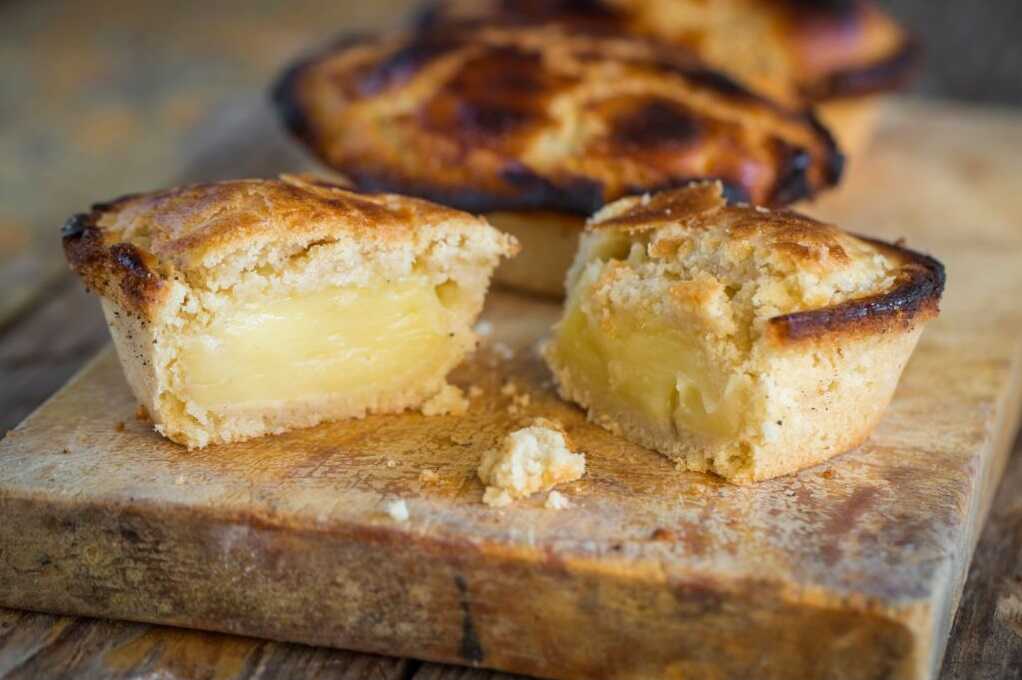
Lecce: to-do list
Lecce, located in the heart of Salento, is one of the most fascinating and historically rich cities in Puglia thanks to the important historical-artistic testimonies of its buildings and monuments. Not only that, Lecce also lends itself to the organization of numerous itineraries thanks to its privileged position, close to the beaches of the Salento […]

Must see in Lecce
Lecce, a charming corner of Puglia, is a city that enchants visitors with its thousand-year history, lively traditions and its unmistakable architectural style: the Lecce Baroque. Often called the “Florence of the South”, Lecce is a true open-air museum that deserves to be discovered in all its nuances. If you are planning an itinerary in […]

Historic center of Lecce
Lecce, known as the “Florence of the South“, is one of the most fascinating destinations for those visiting Salento. With its thousand-year history, its fascinating mix of baroque art and centuries-old traditions, the historic center of the city offers a unique experience that captures the heart of every tourist. If you are traveling in Salento, […]

Piazzetta Santa Chiara – Lecce
In the heart of Lecce, one of the most fascinating cities in Puglia, there is a corner that embodies all the magic and history of Lecce’s Baroque style: Piazzetta Santa Chiara. This small and evocative urban space is not just a point of passage, but a real meeting and entertainment place, a privileged location for […]
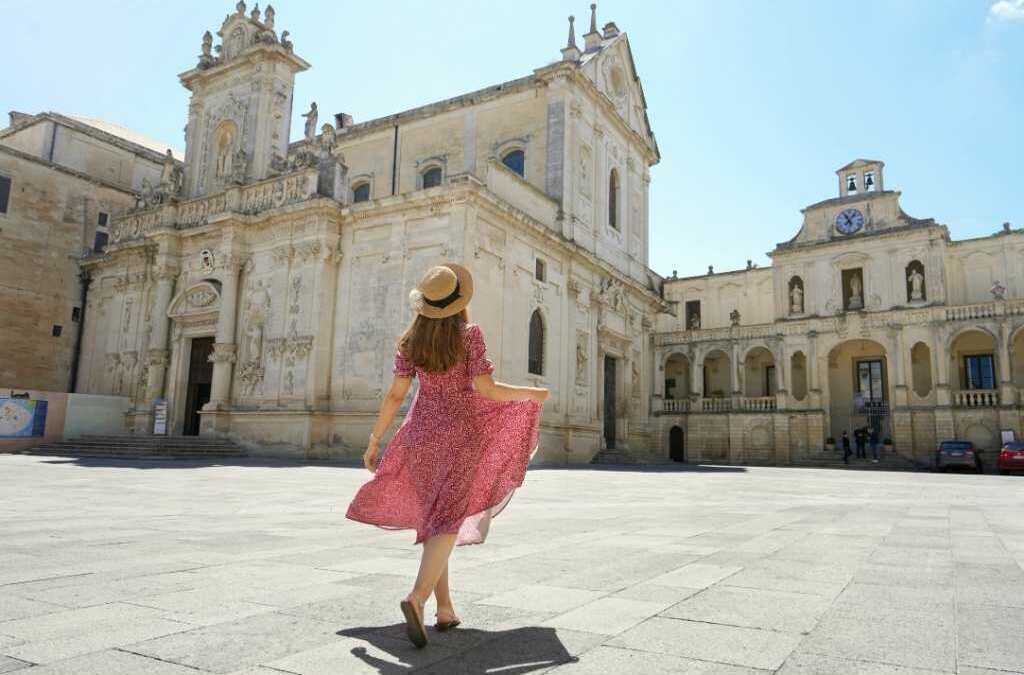
Duomo of Lecce
Located in the historic center of Lecce, the Cathedral stands in one of the most evocative squares in Italy: Piazza del Duomo. This square, which surrounds the cathedral, is one of the most iconic places in Lecce, the hub of the city’s religious life. Here you can breathe in the quiet and fascinating atmosphere of […]

Basilica of Santa Croce in Lecce
If you are planning a visit to Lecce, one of the unmissable stops is undoubtedly the Basilica of Santa Croce, the first Baroque masterpiece of the city. The Basilica is located in via Umberto I, right in the historic center and next to another important structure: the former Celestine convent or Palazzo dei Celestini. Some […]
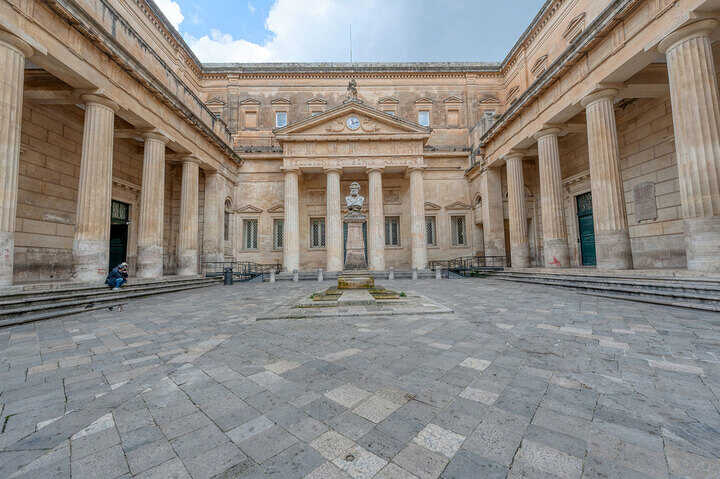
Ex Convitto Palmieri – Lecce
The ex Convitto Palmieri is one of the most significant historical sites in Lecce, a city that boasts an extraordinary cultural and architectural heritage. Located in the heart of the historic center, this building represents one of the most fascinating testimonies of the history of the city and its evolution over time. In this article […]

Museums of Lecce
Lecce, the capital of the province of the same name, is one of the most fascinating cities in Puglia, known for its extraordinary baroque beauty. In addition to the architectural wonders that adorn its squares and streets, Lecce hosts a vast array of museums that tell the story of the city and the region. Lecce’s […]
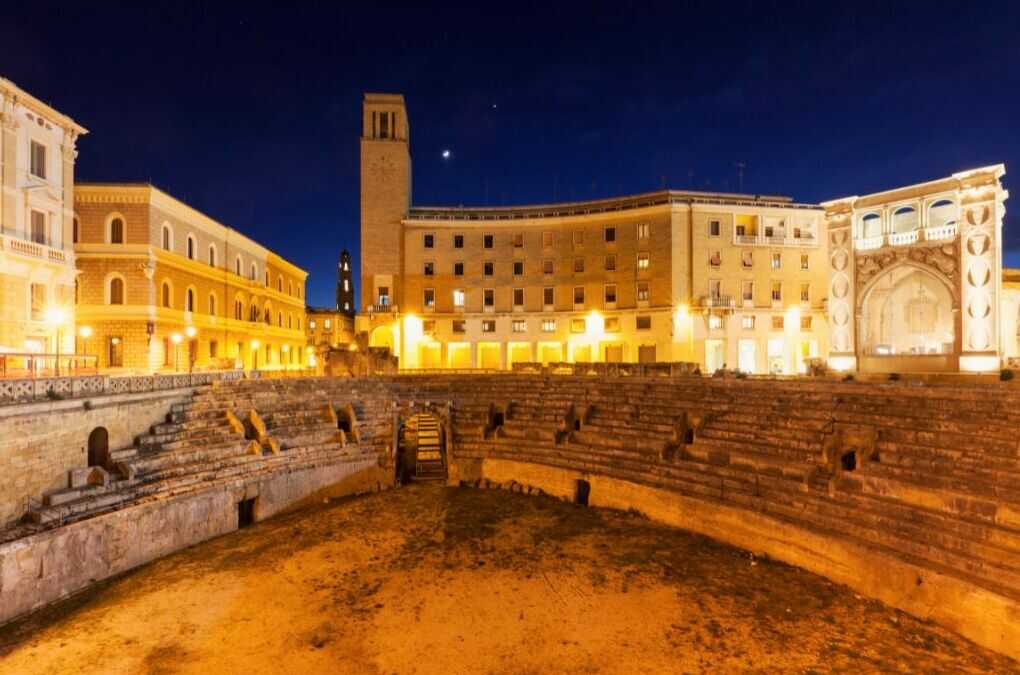
Roman Amphitheatre of Lecce
In the heart of the baroque city of Lecce, one of the most fascinating and significant monuments, which tells thousands of years of history, is the Roman Amphitheater. This extraordinary building, testimony to the glorious past of the ancient city of Lupiae, is one of the main tourist attractions of Lecce and an unmissable stop […]

Porta Rudiae in Lecce
Lecce, one of the most fascinating and historically rich cities in Puglia, is famous for its unique Baroque style, but also for its ancient gates that tell centuries of stories. Among these, Porta Rudiae is one of the most significant, not only for its architectural beauty, but also for the role it has played in […]
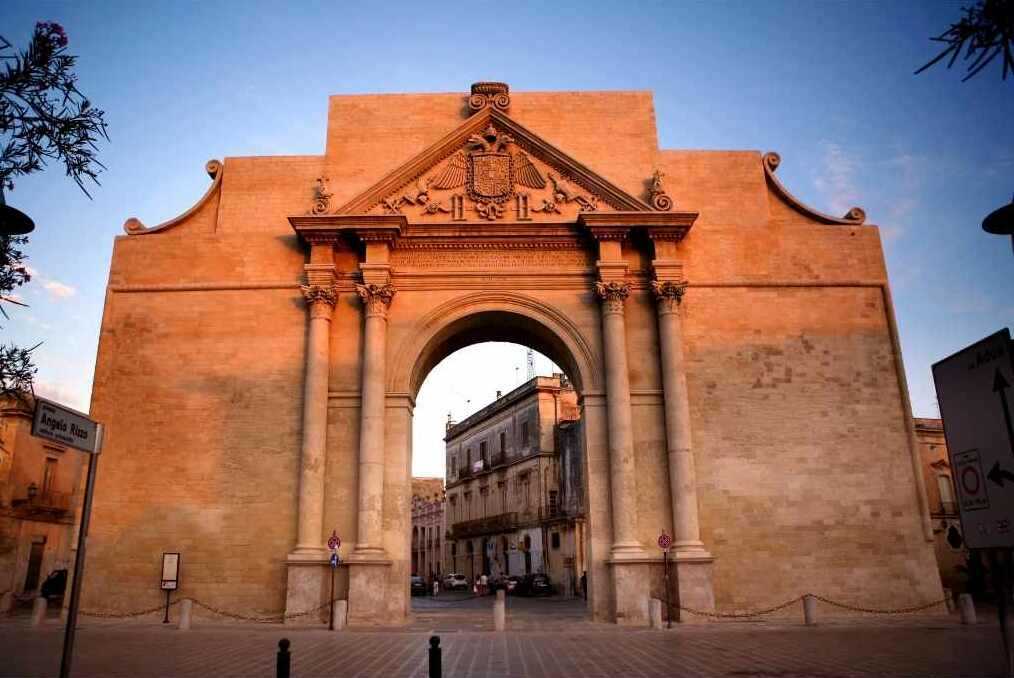
Porta Napoli in Lecce
Lecce, a city rich in history and culture, is famous for its artistic heritage, especially thanks to the magnificent Baroque style that characterizes it. Among the many monuments that embellish this city, Porta Napoli is usually the “first” that is visited by those who go to the city. The “first” because it is located right […]
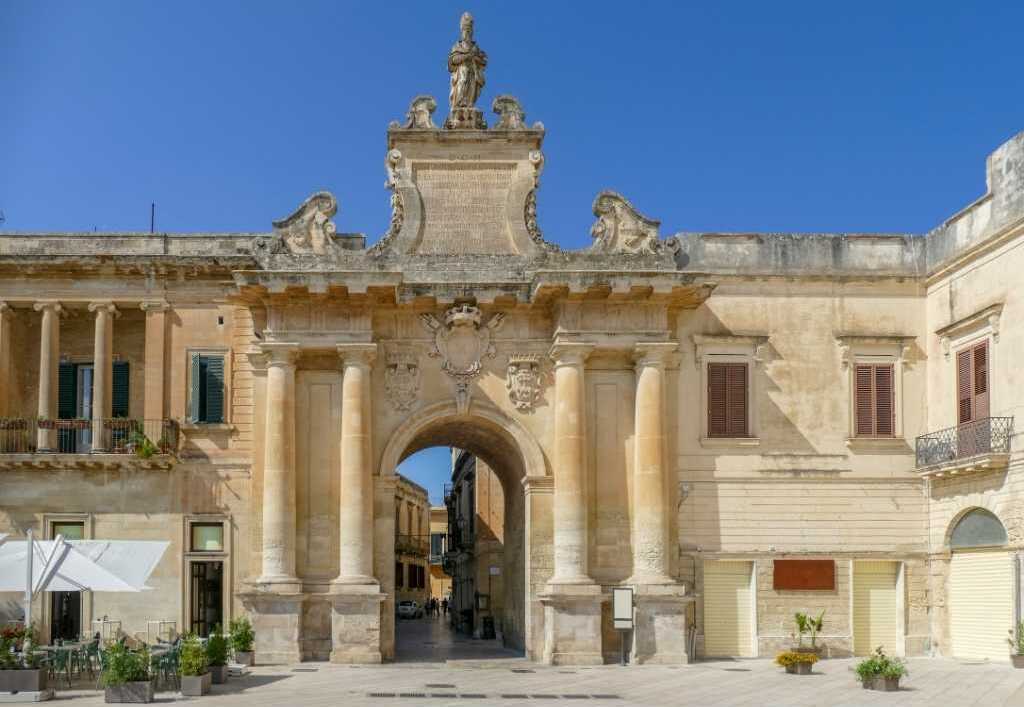
Porta San Biagio in Lecce
Lecce, with its enchanting historic center, is a city that fascinates for its rich cultural and architectural heritage. One of the most fascinating testimonies of this history is represented by its gates, which once marked the entrance and exit of the city. Among these, Porta San Biagio, located at the north-east entrance of the historic […]
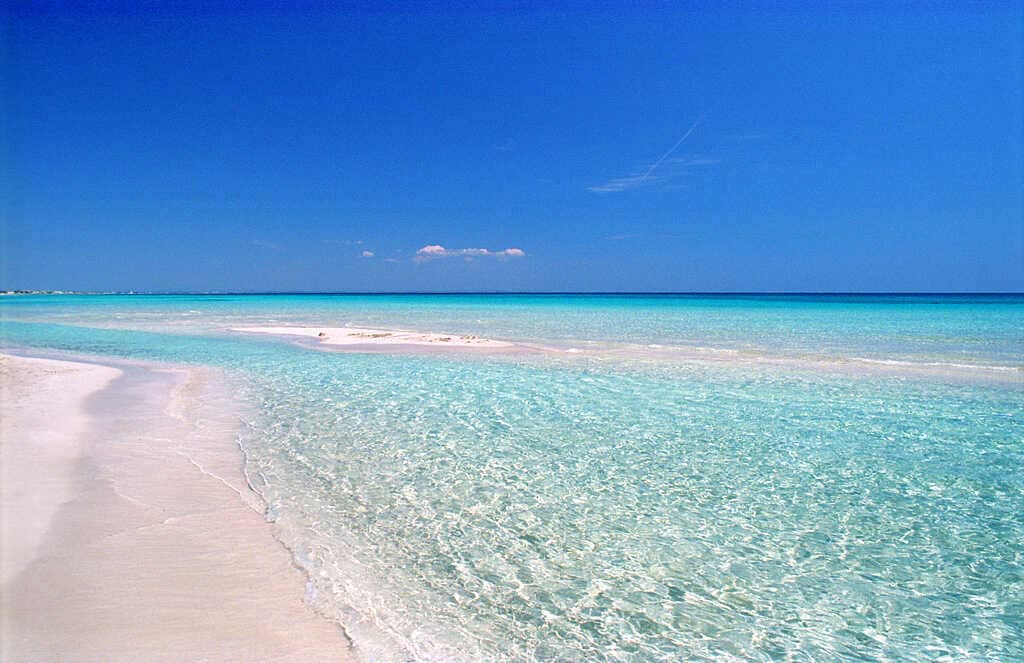
What to see in the surroundings of Lecce
If you are visiting Lecce, one of the most fascinating cities in Salento, do not miss the opportunity to explore its surroundings. Porto Cesareo, Torre Lapillo, Galatina, Gallipoli and Torre dell’Orso are some of the unmissable destinations that will allow you to discover other wonders of this region, famous for its natural beauty, history and […]
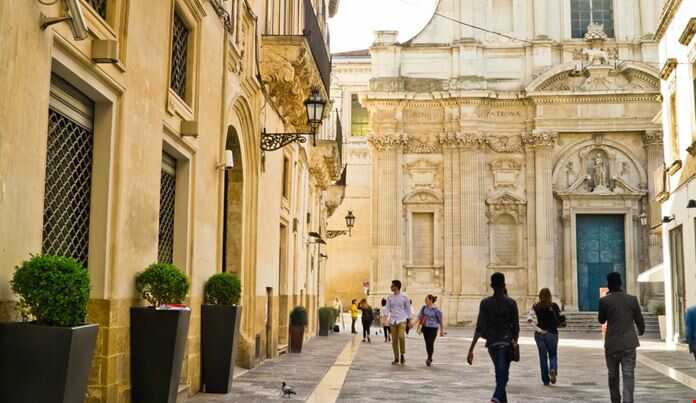
Shopping in Lecce
Lecce, the capital of the Baroque Salento, is the favorite destination for tourists visiting Salento. The city offers its visitors not only an unparalleled historical and cultural wealth, but also a shopping experience that combines style, tradition and quality. Walking through the streets of the historic center, among historic buildings and elegant squares, you can […]
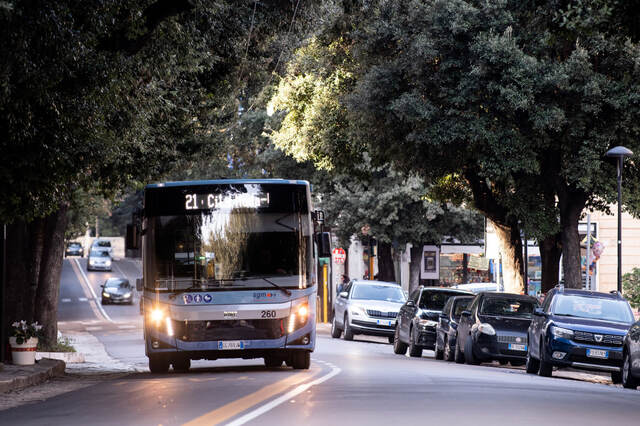
How to get to Lecce
If you are planning a trip to Salento and have chosen Lecce as your “base” for your trip, you have several options for reaching this destination. Whether you arrive by train, bus, plane or car, in this article we will explore the various ways to get to Lecce, with practical details for each means of […]
